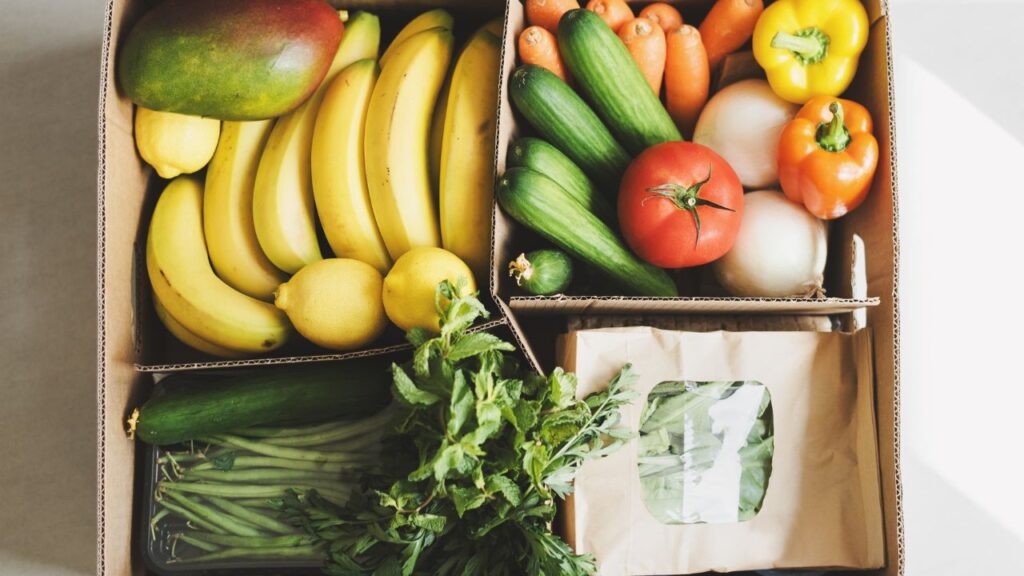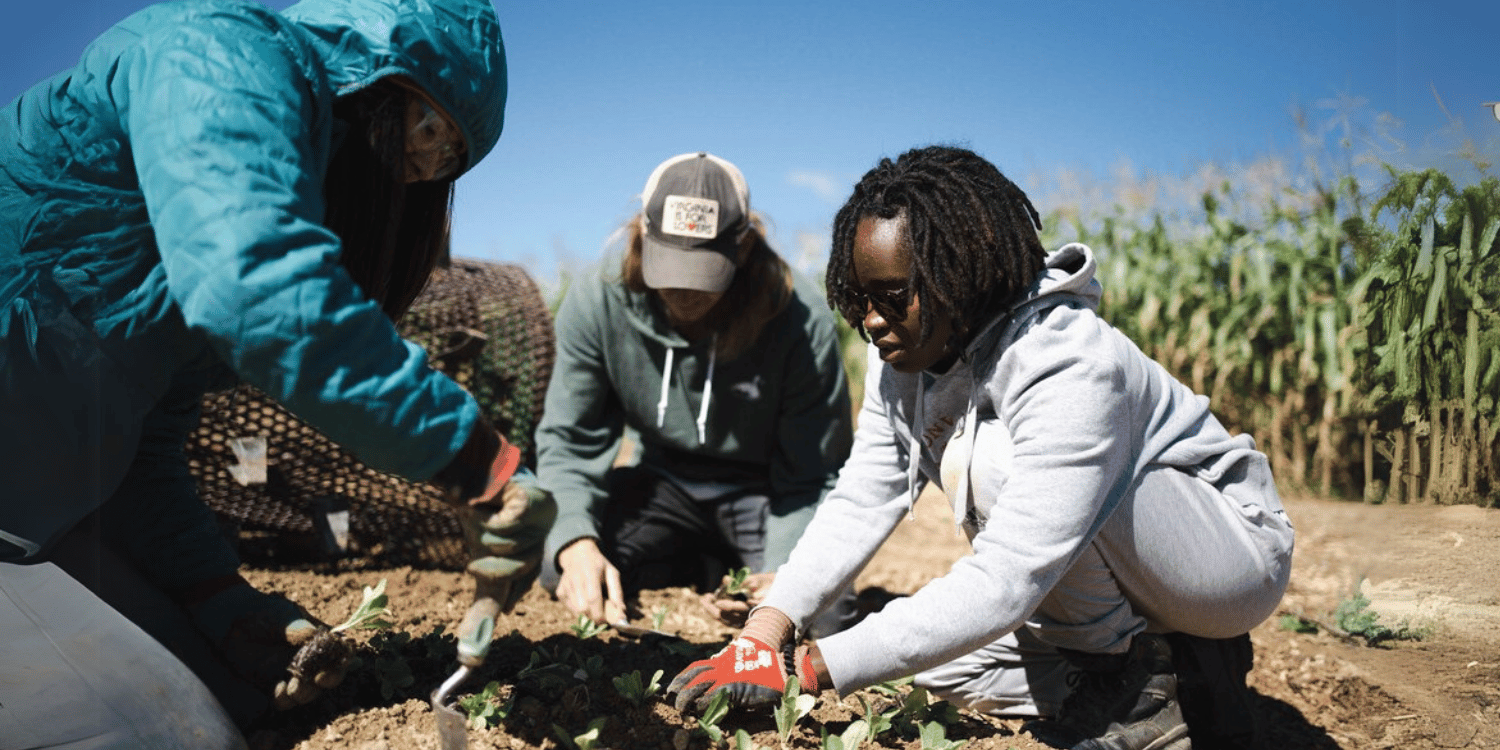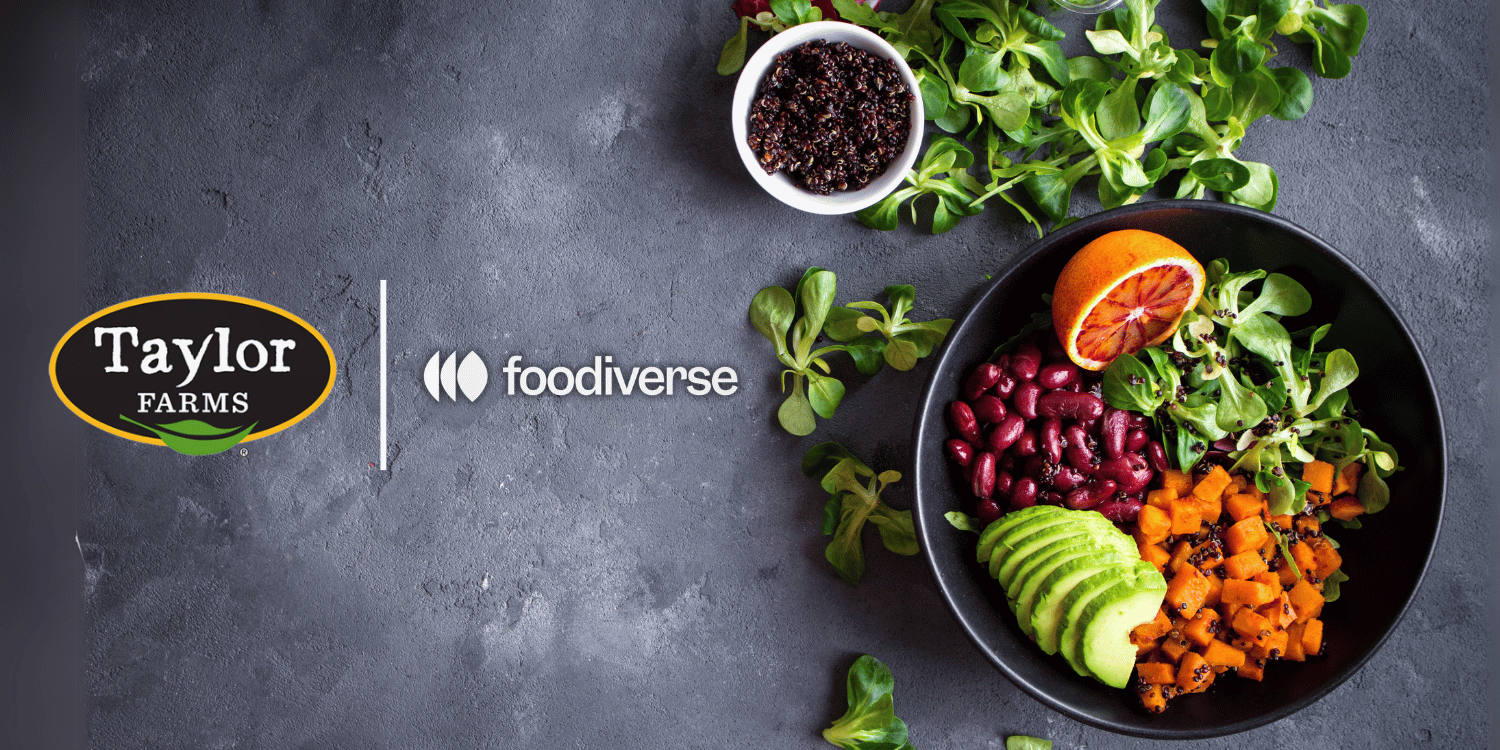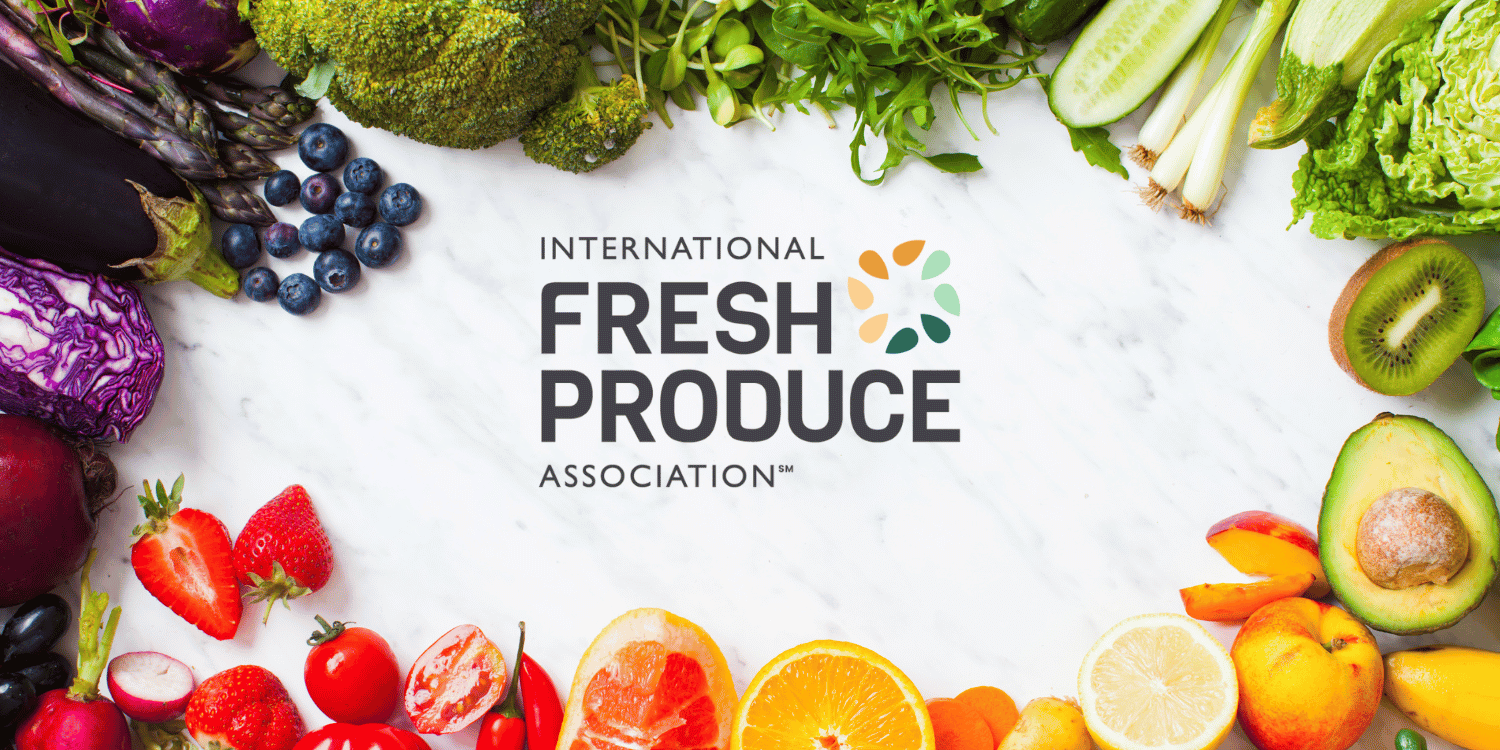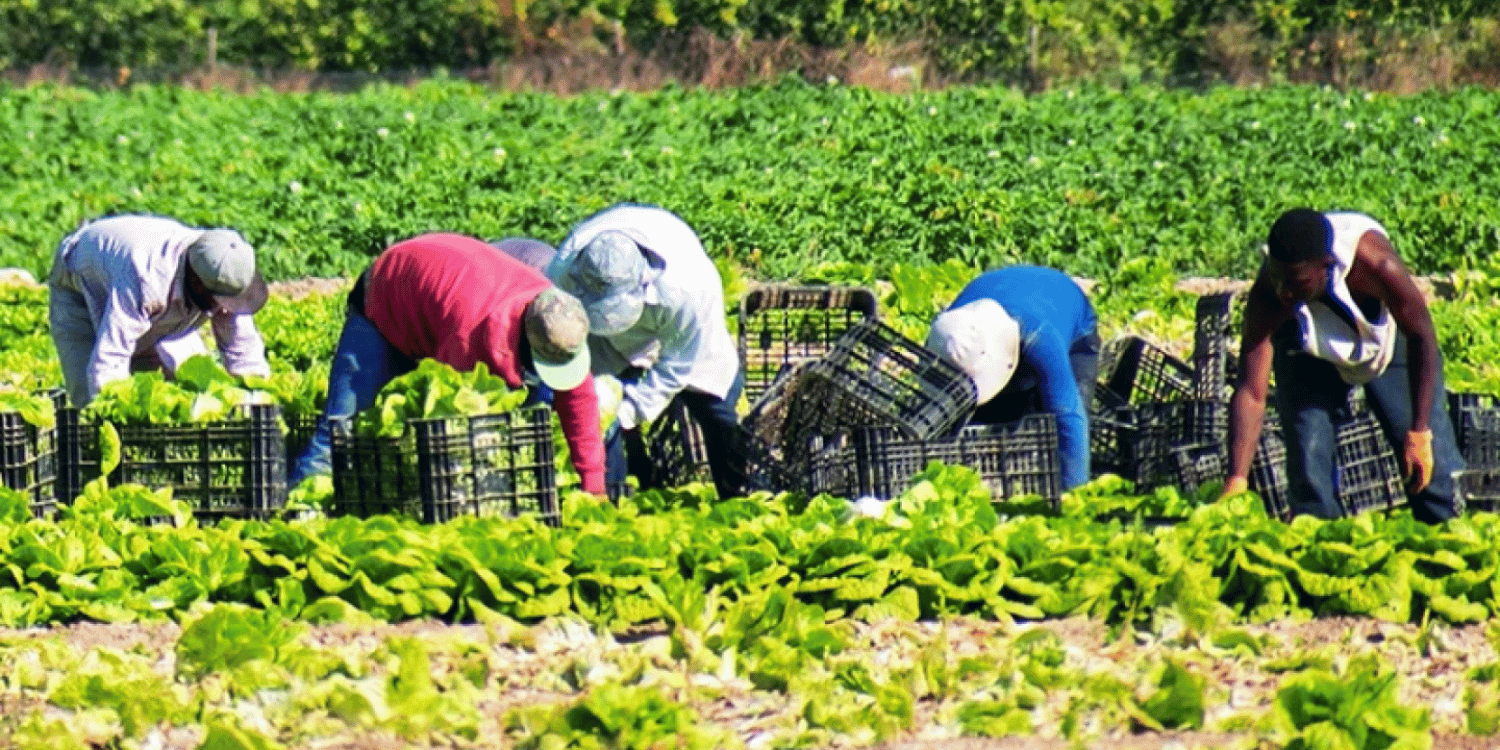In today’s competitive marketplace, standing out on the grocery shelf is more critical than ever.
Revolutionizing the way we present our goods to consumers, innovative packaging is becoming the backbone of product differentiation and promotion.
Gone are the days when produce packaging served purely utilitarian purposes.
We now demand more than just transportation and preservation capabilities; we seek sustainable, eco-friendly, and aesthetically pleasing solutions to capture the consumers’ attention.
This blog post will dig in into the world of new-age packaging solutions, focusing on their benefits for businesses across the supply chain.
Read on to understand how your business can reap the benefits of these innovative packaging trends.
- Exploring biodegradable bags for fruit and vegetable packaging.
- Investigating edible food wraps made from seaweed.
- Consideration of bioplastic containers sourced from plants.
- Utility of eco-friendly waxed cardboard in produce packaging.
- Examining sustainable packaging options using mushroom-based materials.
Beyond these amazing eco-friendly produce packaging solutions, there’s a wealth of information still to explore that can significantly benefit your business.
In the next sections, we’ll discuss novel ways to reduce food waste with smart packaging technology, as well as the economic implications of transitioning to sustainable packaging.
Consider this as an opportunity to learn how these changes can impact and ultimately drive your profitability, while significantly reducing your business’ environmental footprint.
Let me tell you, stick around as we shed light on these pressing and essential issues, leading the way towards a greener and more efficient future for your produce business.
Contents
Innovative Produce Packaging Solutions For Your Business
1. Biodegradable Fruit and Vegetable Bags
In Short: Biodegradable fruit and vegetable bags, made from renewable raw materials, reduce environmental impact and adhere to regulations, making them an essential component of greener food packaging. Despite higher costs and specific decomposition requirements, they are a beneficial investment for businesses aiming for sustainability and improved customer perception.
Amidst an era of increasing environmental consciousness, biodegradable fruit and vegetable bags have emerged as a important component in the movement towards greener food packaging.
Compared to traditional plastic bags, these bags are designed for a single, yet very significant, difference: they break down naturally over time.
The bags are made from biopolymers, sourced largely from renewable raw materials – such as cornstarch or sugarcane – that decay into non-toxic compounds when disposed of appropriately.
By leveraging the power of nature, biodegradable bags provide a solution to the massive global problem of plastic waste, substantially diminishing the ecological footprint left by the produce industry.
A number of factors contribute to why biodegradable fruit and vegetable bags are becoming increasingly important for food-related businesses looking to optimize their eco-friendliness.
Here is a list of some of the key benefits of these innovative packaging solutions:
- Reduced Environmental Impact: These bags are created with materials that breakdown, resulting in fewer harmful residues left in the environment.
- Improved Customer Perception: A growing demographic of consumers prefer to support businesses which prioritize environmental responsibility. By utilizing these bags, establishments can appeal to these eco-conscious customers.
- Adherence to Regulations: Some jurisdictions have already banned or are in the process of banning single-use plastic bags. Making the switch to biodegradable options ensures compliance with these regulations.
The journey towards environmentally-friendly practices requires a comprehensive and multi-dimensional approach, and packaging waste is a huge piece of this puzzle.
Biodegradable bags have some noteworthy disadvantages as well, like their higher cost in comparison to traditional plastic bags and the need for particular conditions to decompose effectively.
However, businesses need to realize that the initial investment in these packaging items will deliver long-term gains, not only in terms of reduced environmental damage, but also through bolstered reputation and customer goodwill.
Customer satisfaction and brand image, after all, play crucial roles in the success of any business.
Taking the step towards greener packaging options is a testament to a company’s sense of responsibility towards environmental conservation and its commitment to the adoption of sustainable practices.
Implementing biodegradable bags as the packing choice for fruits and vegetables is not just a trend that businesses are following, but a crying need of the hour.
Pro Tip: Biodegradable fruit and vegetable bags made from biopolymers like cornstarch and sugarcane not only decrease the ecological footprint of the produce industry but also offer numerous benefits such as reduced environmental impact, improved customer perception, and adherence to regulations.
While there may be limitations and challenges in the adoption of these packaging solutions, the utility and benefits they bring to the table, undoubtedly make them a worthwhile consideration for the produce industry.
It’s essential for businesses to consider switching to such sustainable and eco-friendly alternatives, paving the way for a better and cleaner future.
2. Edible food wrapping made from seaweed
In Short: Edible seaweed-based food wraps provide an eco-friendly, sustainable, and renewable packaging alternative with added nutritional benefits. Despite challenges such as perceived high costs and consumer acceptance, these wraps can drive sustainability and brand differentiation in businesses, requiring efforts to educate customers about their environmental advantages.
Edible food wrapping made from seaweed offers a unique and eco-friendly alternative to traditional packaging materials.
This innovative solution is quickly gaining popularity due to its sustainability
Seaweed, as a raw material, is highly renewable and has an added advantage of not competing with food crops for land resources.
Besides its ecological advantages, seaweed-based food wrap is fully edible and can enhance the product’s flavor, all while reducing total waste.
Is not just the environmental benefits, consumers are also increasingly gravitating towards products that embody a holistic approach to health and sustainability, like seaweed wraps.
Here are some key benefits of transforming your packaging solutions from traditional plastic to seaweed-based edible wraps:
- No waste: Since the product is edible, there’s no waste left behind after consumption.
- Contributes to Unique Selling Proposition (USP): Using seaweed wrapper can certainly form part of your product differentiation strategy.
- Nutritional benefits: Seaweed comprises various vitamins and minerals, adding to the nutritional value of the product.
Transitioning to edible food wraps can be a significant move towards sustainable business practices.
However, this switch does not come without its challenges.
A major hurdle is the perceived cost associated with adopting a new packaging material.
While it is true that edible food wraps are more expensive compared to plastic, the long-term benefits – such as the potential to appeal to a larger customer base concerned with sustainability – may outweigh initial costs.jpg
Another potential obstacle is consumer acceptance. Customers may not be accustomed to the idea of eating the packaging along with the food product.
However, with the current shift towards environmentally friendly packaging solutions, the odds are that your customers may be willing to adapt to practices that reflect their own values.
However, it must be noted that the transition to edible food wraps like those made from seaweed would require a considered effort on behalf of the business.
You may have to educate customers about your sustainable packaging, including how to use it, and just why it is better for the environment.
This effort may not only lead to loyal customers but also play a significant role in brand differentiation.
In a world increasingly geared towards sustainable solutions, adopting a seaweed-based food wrap could set your business apart.
3. Bioplastic Containers from Plant Sources
In Short: Bioplastic containers, derived from plant sources, are emerging as a sustainable packaging choice that decreases reliance on fossil fuels and reduces carbon emissions. These plant-based containers, an environmental-friendly alternative, are compostable, lessen pollution, conserve resources, and contribute towards a greener and more sustainable business operation.
When considering sustainable packaging solutions for your business, a widely emerging and highly innovative option to explore is the use of bioplastic containers derived from plant sources.
The process of obtaining bioplastics greatly reduces the amount of non-renewable resources used in conventional plastic production.
It is an initiative that not only lessens the reliance on fossil fuels, but also decreases carbon emissions associated with plastic production.
Focusing on sourcing plant-based materials for your produce packaging is therefore a step towards operating a greener and more sustainable business.
Plant-based bioplastics also reduce the damaging impact of plastics on marine life and the larger environment.
Referred as a more environmental-friendly alternative, these plant-derived containers are capable of decomposing under certain conditions.
These types of containers would minimize damage done to the Earth’s ecosystems, actively taking care of our planet in the long term.
Here are some key benefits of choosing bioplastic containers:
- Reduced carbon footprint: Bioplastics, made from renewable biomass resources, significantly lower carbon emissions during the production process compared to conventional petroleum-based plastics.
- Less pollution: As they can degrade in a composting environment, plant-based containers pose less threat to wildlife and natural ecosystems.
- Conservation of resources: The use of bioplastic packaging promotes resource efficiency by sourcing materials that are renewable and readily available.
As a result, repay that we owe the Earth by ensuring sustainability through every aspect of our business.
Moving towards bioplastic containers for your produce packaging solutions could make a significant difference in the sustainability of your operations.
Every change, no matter how small it may seem, contributes to a bigger, global impact.
Make your business a part of that global impact by opting for bioplastic containers from plant sources, proving that environmental responsibility and business growth can hand in hand.
Every business must strive to be a part of the solution, not the problem.
Your consumer base will respect sustainable practices, increasing brand loyalty while preserving our planet.
4. Eco-friendly Waxed Cardboard for Produce
In Short: Eco-friendly waxed cardboard, made from natural, biodegradable waxes, is increasingly replacing traditional plastic wraps as a sustainable and cost-effective packaging solution. Businesses are recognizing its economic potential along with its environmental benefits, making it a strategic choice for those pursuing sustainable practices.
In the ongoing narrative of sustainable packaging solutions, one might consider the potential of eco-friendly waxed cardboard. This type of packaging has been recognized as a replacable for traditional plastic wraps and containers. The growing use of eco-friendly waxed cardboard for produce packaging indicates a shift in business mindsets
This choice is not only beneficial for the environment but also advantageous for cost savings in long-term operational and disposal costs. Many businesses have seen the pros in using such alternatives and it’s becoming a push factor in the sustainability field.
Eco-friendly waxed cardboard is made using a variety of natural waxes, unlike its traditional counterpart which uses paraffin-based waxes. The fact that the wax is biodegradable gives this packaging solution its environment-friendly aspect.
Now, here are some benefits and properties of eco-friendly waxed cardboard:
- Durability: The waxed coat provides an extra layer of protection that makes the cardboard stronger and resistant to wear and tear.
- Moisture-resistant: The wax coating also gives the cardboard moisture resistant qualities which is important when it comes to packaging fresh produce.
- Biodegradable and compostable: Due to its natural components, this type of cardboard is easy to dispose of and decomposes naturally over time.
Indeed, the waxed cardboard holds up well compared to traditional plastic containers.
The rising popularity of this type of packaging isn’t only due to its eco-friendly label. Businesses have also acknowledged the packaging’s economic potential. With reduced waste, lower production costs, and positive customer perception, eco-friendly waxed cardboard can lead to financial success for many businesses.
Companies that lead with sustainability in mind are already making the shift to eco-friendly waxed cardboard. The decision to switch is no longer just an environmentally conscious one but also a business strategic move.
When adopting to this type of packaging, businesses may need to make adjustments in handling and storing these materials. Despite the few challenges, the benefits far outweigh the downsides, which makes the transition a worthwhile investment.
As a result, packaging solutions like the eco-friendly waxed cardboard are bringing changes in the business landscape. With the urgent need for businesses to transition towards sustainable practices, adopting such solutions can be a significant start towards choosing a greener path.
Pro Tip: Consider using eco-friendly waxed cardboard for packaging as it is a cost-effective, sustainable and durable solution, ensuring long-term savings, environmental responsibility and a positive shift in business strategy.
The eco-friendly waxed cardboard represents a dynamic shift towards better business practices. Ethics, eco-awareness, and economics are all woven seamlessly into this innovative packaging solution. This has a power to make a significant difference and to propel the movement towards sustainable business practices, one box at a time.
Overall, the eco-friendly waxed cardboard is a fantastic example of how we can make changes for the better. By switching to sustainable alternatives, businesses are taking the steps necessary to create a more sustainable future that benefits everyone.
5. Sustainable Mushroom-Based Packaging
In Short: Sustainable mushroom-based packaging presents a promising, environmentally-friendly alternative to plastic, offering benefits such as biodegradability, superior protective capabilities, and customization of shape and size. However, higher production costs currently limit its wide-scale adoption, despite its potential for reducing carbon emissions and catering to customers’ demand for sustainable packaging options.
Exploring innovative produce packaging solutions, sustainable mushroom-based packaging emerges as a promising alternative with considerable upside.
This groundbreaking technology uses mycelium, the root structure of mushrooms, which is grown in controlled environmental conditions.
Not only does mushroom packaging mitigate the impact of conventional plastic waste on the environment, but it also lends itself to the circular economy model.
The biodegradable properties of mushroom-based packaging ensure its breakdown into harmless organic matter post-consumption, offering an effective solution to plastic pollution.
Manufacturing mushroom packaging demands lesser energy and produces fewer carbon emissions compared to typical plastic and polystyrene counterparts.
Fragmenting the features and benefits of this innovative solution, we have:
- The natural composition of mushroom packaging allows it to return to the earth safely without leaving harmful residues or microplastics in the environment.
- Mushroom packaging provides superior protective capabilities, making it appropriate for handling produce.
- Its insulating properties ensure temperature control, which is essential in preserving the freshness of fruits and vegetables.
- Mushroom packaging is customizable in terms of shape and size, which offers immense flexibility.
Furthermore, mushroom-based packaging satisfies customers’ growing demand for sustainable packaging options in the wake of worsening climate change.
By adopting this type of packaging for your business, you signal an affirmative nod towards environmental responsibility and contribute to the broader goal of sustainability.
The feasibility of mushroom packaging extends beyond the produce industry as companies across various sectors, including electronics and furniture, have shown interest in adopting this bio-material.
However, the relatively higher cost of production compared to plastic can act as a hinderance to its widespread adoption.
But considering the potential environmental and marketing benefits, businesses may find the cost a reasonable investment in the long term.
Important: Sustainable mushroom-based packaging utilizes the root structure of mushrooms to create biodegradable packing materials that can mitigate environmental impact, provide effective solutions to plastic pollution, and contribute to the circular economy model, despite its relatively higher cost of production compared to plastic.
Further optimizations to reduce these costs could significantly enhance the practicality of mushroom packaging, making it more accessible to businesses at large.
As the world progressively transitions from traditional packaging methods, sustainable alternatives like mushroom-based packaging are poised to be the next big thing and a game-changer for the produce industry.
The Bottom Line
Produce packaging solutions are no longer just practical necessities, but also catalysts for driving business growth. Their innovative designs extend from enhancing the aesthetic appeal of products to promoting sustainability, indicating progress in both marketing and environmental stewardship. As such, businesses should capitalize on these innovative solutions to cater to the increasingly conscious consumer market. By embracing these trends, businesses not only demonstrate their adaptability but also make a statement about their dedication to global sustainability. Therefore, produce packaging plays a crucial role in modern business strategies, going beyond simple containment and preservation practices.

